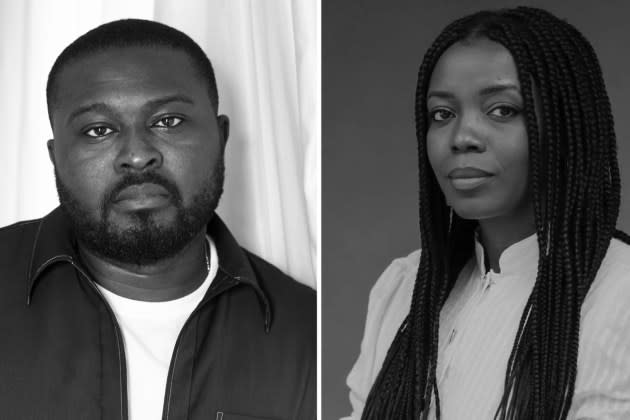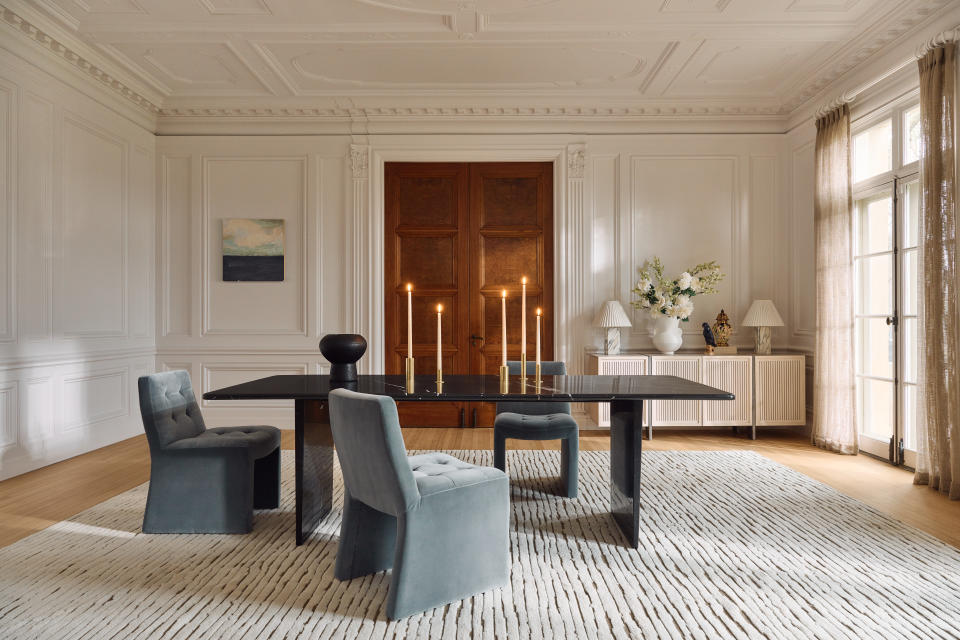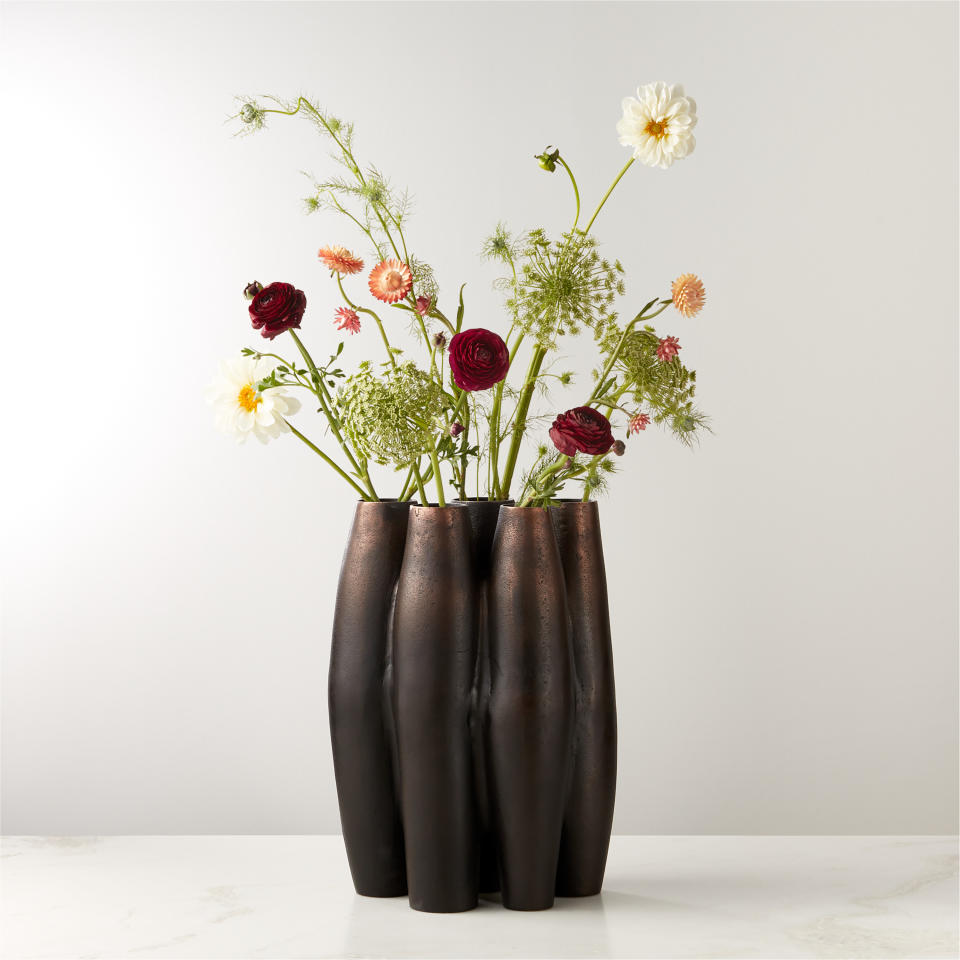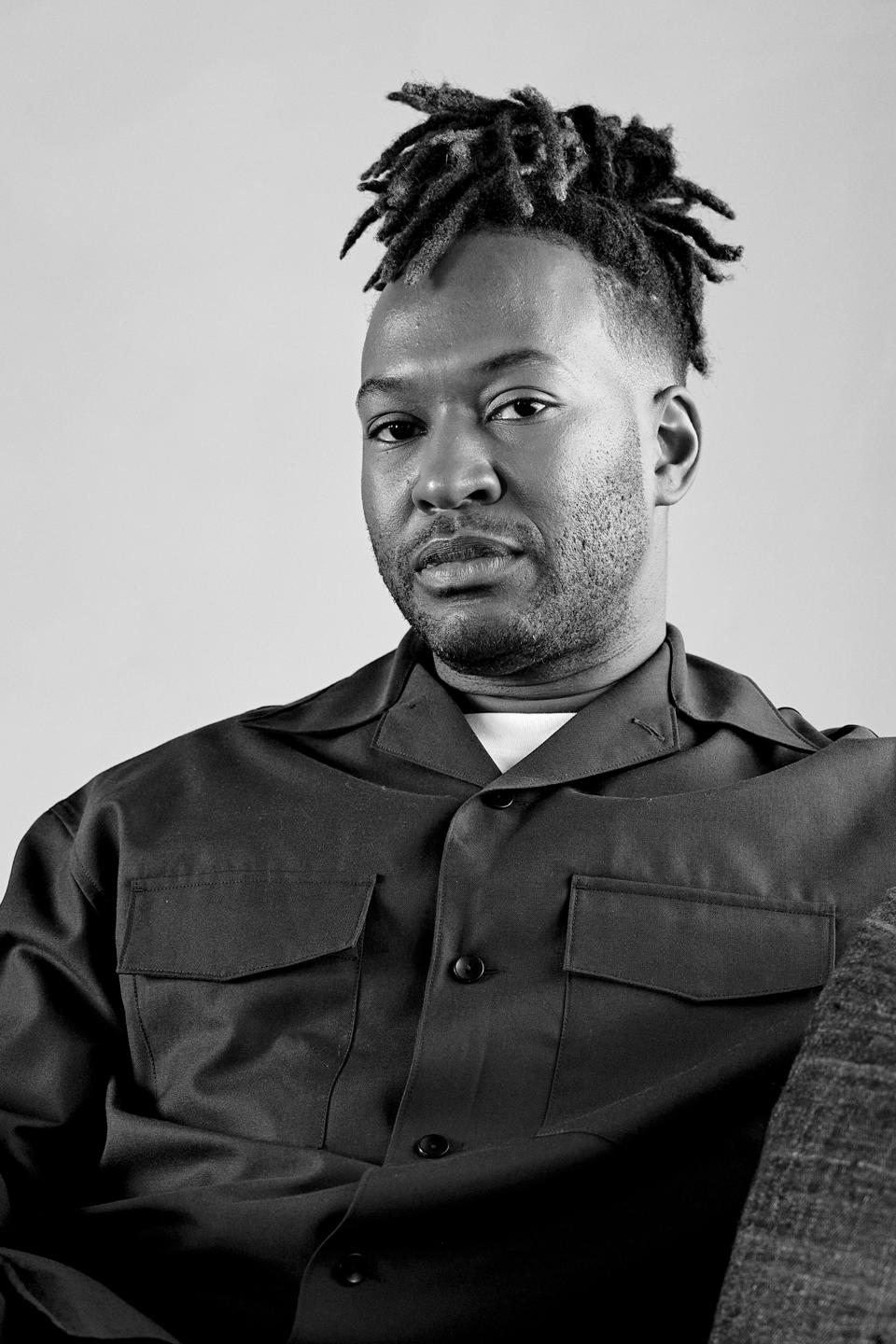EXCLUSIVE: Two West African Pioneers Enhance CB2’s Black in Design Collective

MILAN — Leading Niamey, Niger-based architect Mariam Issoufou Kamara and Lagos-based designer Nifemi Marcus-Bello are two names that resonate from the Sahara to the galleries of New York and Miami. They are the latest design visionaries to be added to CB2’s collective of Black artists and designers around the globe. Their new creations launched Thursday.
The Black in Design Collective launched last July and features designers brought together and mentored by Evan Jerry. Jerry is the designer and artist behind CB2 cult favorites like T Marble side table and the Marisa Burl wood desk. His own practice, Studio Anansi, has garnered acclaim for propelling Black storytelling through design. CB2 is Crate & Barrel’s design-forward sister brand.
More from WWD
Marcus-Bello is the founder of Lagos Nmbello Studio and most recently garnered acclaim at Design Miami 2023 with his latest creations made of sand-cast aluminum — functional sculptures made in an auto-parts foundry in Lagos. He normally gravitates to sheet metal bending, inspired by local power generator production (generators are covered in sheet metal), due to Lagos’ lack of 24-hour electricity. But for his debut with CB2, which includes the Kishi Marble Dining Table, he experimented for the first time with Italian Carrara Venato marble.
“Marble is a material that I respect. I wanted to do something very classic that would be long lasting. And again, sustainable so that it can be passed out from one generation to another versus something you’re gonna chuck out in 20 years,” Marcus-Bello told WWD.
The name Kishi translates to “unshakable” or “unbreakable,” which speaks to the durability and strength of the table, he said, adding that he opted for a straightforward silhouette to keep all eyes on the dramatic expanse of bright white and smoky gray veining.

Issoufou Kamara is an architect who is a main African proponent of sustainable architecture and pioneering structural solutions to respond to climate change — especially in her native Niger. With her Niamey-based Studio Atelier Masōmī, she was recognized at the Venice Architecture Biennale last year for her three-dimensional architectural models conjured from West Africa’s past. Her works were presented alongside artist Theaster Gates and architects of color from around the world, including the now controversial Sir David Adjaye, Sumayya Vally, Francis Kéré and Ibrahim Mahama, as part of a Force Majeure exhibition at Giardini, the Central Pavilion.
Her CB2 debut includes a Randa Blackened Bronze Vase for which she was inspired by African clay jars traditionally used for storing grain or carrying, purifying and cooling drinking water.
Beyond her work with CB2, Issoufou Kamara’s studio is putting Niger’s architecture on the map with upcoming projects all around the world in regions like the Middle East, South America, Europe and with competitions the U.S. Though Niger is often confused with Nigeria, she said the two countries have many differences despite their proximity. For starters, Niger is more arid. Surrounded by the Sahara Desert and according to the United Nations Children’s Fund (UNICEF), access to drinking water and sanitation is scarce in Niger with large disparities between urban and rural areas and between regions. Only 56 percent of the population has access to a source of drinking water and only 13 percent of the population has access to basic sanitation services. This reality inspires Issoufou Kamara’s work across the board.
“People started talking a lot more about Niger through the work we were doing and has become a source of fascination…and because we’re a desert country, almost everything we do has to do with Earth. So there was a lot related to the ground, a lot related to textures and materiality and temperatures of material,” she said, reflecting on the sand-case aluminum vessels she designed.
“The references to water and grain storage are essentially about scarcity and the collective labors necessary for a community’s survival, from season to season, in arid contexts,” Issoufou Kamara continued, adding that when she contemplates metals, the first thought that comes to mind is what sort of temperature that material emits.

Whether a designer is established or emerging, both designers said they are proud to support an initiative that brings to the fore the work of Africans and members of the diaspora. Also one that highlights the cultural and artistic nuances of pertain to individual African nations.
“We talk about the continent as being this one thing, you know? There are aggregated complexities even within the same countries. So being able to talk about nature a lot more through the work has been very gratifying also in sort of exposing these varieties, and this richness [of Niger],” Issoufou Kamara said.
Marcus-Bello echoed this, reflecting on Lagos as a hub of the ongoing West African renaissance — from Modernist Art to Afrobeats. The designer was confident in the hope of growing solidarity between African cultures around the world thanks to the CB2 platform.
“Designers across the continent, even in the diaspora, regularly have conversations around how to come together to even put shows together or even just talk about what each one is doing and kind of lean on one another. We’ve always been a power that way,” he said.

Best of WWD

